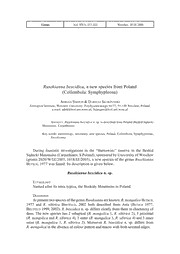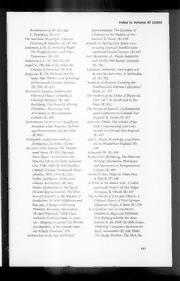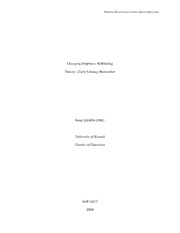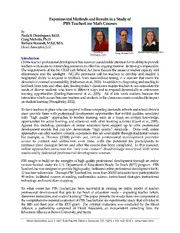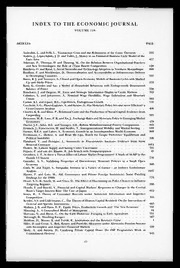
National Stream and Aquatic Ecology Center PDF
Preview National Stream and Aquatic Ecology Center
United States Sampling Surface and Subsurface Department of Agriculture Particle-Size Distributions in Forest Service Wadable Gravel- and Cobble-Bed Rocky Mountain Research Station Streams for Analyses in Sediment General Technical Report RMRS-GTR-74 Transport, Hydraulics, and May 2001 Streambed Monitoring Kristin Bunte Steven R. Abt Abstract _________________________________________ Bunte, Kristin; Abt, Steven R. 2001. Sampling surface and subsurface particle-size distributions in wadable gravel- and cobble-bed streams for analyses in sediment transport, hydraulics, and streambed monitoring. Gen. Tech. Rep. RMRS-GTR-74. Fort Collins, CO: U.S. Department of Agriculture, Forest Service, Rocky Mountain Research Station. 428 p. This document provides guidance for sampling surface and subsurface sediment from wadable gravel- and cobble-bed streams. After a short introduction to streams types and classifications in gravel-bed rivers, the document explains the field and laboratory measurement of particle sizes and the statistical analysis of particle-size distributions. Analysis of particle parameters, including shape, density, and bulk density are also discussed. The document describes the spatial variability of bed-material particle sizes as well as the horizontal and vertical structure of particle deposits. The discussion of sampling procedures and equipment helps the user to make appropriate selections that support the sampling objective. Sample-size estimates may be obtained from empirical data or computed from statistical relationships between sample size and accuracy. The document explains a variety of methods, their usage and prerequisites. A detailed discussion of sampling schemes guides the user to select appropriate spatial sampling patterns necessary to produce representative samples. Keywords: Particle-size analysis, spatial variability of bed-material size, sampling procedures, sampling equipment, sample size, spatial sampling schemes. Authors _________________________________________ Kristin Bunte is a Fluvial Geomorphologist and Research Associate at the Engineering Research Center, Department of Civil Engineering, Colorado State University. She received M.S. and Ph.D. degrees in geography from the Freie Universität Berlin in Germany. Steven R. Abt is Professor and Associate Dean for Research and Graduate Studies, College of Engineering, Colorado State University, and a Professional Engineer. He received M.S. and Ph.D. degrees in civil engineering from Colorado State University. You may order additional copies of this publication by sending your mailing information in label form through one of the following media. Please specify the publication title and number. Telephone (970) 498-1392 FAX (970) 498-1396 E-mail rschneider@fs.fed.us Web site http://www.fs.fed.us/rm Mailing Address Publications Distribution Rocky Mountain Research Station 240 West Prospect Road Fort Collins, CO 80526 The use of trade or firm names in this publication is for reader information and does not imply endorsement by the U.S. Department of Agriculture of any product or service Sampling Surface and Subsurface Particle- Size Distributions in Wadable Gravel- and Cobble-Bed Streams for Analyses in Sediment Transport, Hydraulics, and Streambed Monitoring Kristin Bunte Steven R. Abt Prepared in support of the National Stream Systems Technology Center mission to enable land managers to “secure favorable conditions of water flows” from our National Forests. Preface __________________________________________ The Stream Systems Technology Center of the Rocky Mountain Research Station, U.S. Forest Service, initiated the generation of this compendium of methods because National Forest System streams are dominated by gravel caliber material and sound guidelines for characterizing the bed material of gravel- and cobble-bed streams are needed by hydrologists, fisheries and aquatic biologists, and geomorphologists. This project was initiated to meet Forest Service needs and at the same time provide an encyclopedia of approaches as a basis for the Federal Interagency Sedimentation Project Task Committee to adopt selected methods as standard approaches in the future. Work on this reference was initiated by an ad hoc team convened by Larry Schmidt of the Stream Systems Technology Center. The team included Ron Copeland, U.S.Army Corps of Engineers, Phil Zrymiak, Environment Canada, Randy Parker, U.S. Geological Survey, and Jim Fogg, Bureau of Land Management. Streambed analysis and sampling in gravel-bed rivers have received increasing attention, especially over the last few years. Publishing activity reflects this trend. During the late 1970s and the 1980s, one or two papers were published per year on gravel-bed sampling procedures, sample size estimates, or sampling schemes. This number has risen to about five to seven papers per year during the 1990s. Despite the interest in the topic, a comprehensive compilation of these approaches is lacking and users need a reference to guide them through the multi-layered aspects of bed-material sampling. The work presented is intended to fill this gap. Obviously attempting to comprehensively synthesize a rapidly evolving technology is impossible. This effort represents our knowledge at this point in time. Consequently, the user must exercise judgment in applying the approaches provided herein to specific sampling projects. To make the best choice of methods, the user should have knowledge about gravel-bed rivers and the processes forming them. The selection of a sampling program (where, how, and how much to sample) significantly influences the outcome. Acknowledgments_________________________________ This publication was made possible through a partnership between the Rocky Mountain Research Station, National Stream Systems Technology Center and the Colorado State University, Engineering Research Center. The authors appreciate the helpful contributions and assistance of John Gray, Tom Lisle, Sue Hilton, Dave Dawdy, Paul Bakke, Mike McNamara, Mark Weinhold, Mohammed Samad, and Pete Klingeman. A special thanks to John Buffington, John Potyondy, and John Ritter for their significant effort in carefully reviewing this document and to Kurt Swingle and Louise Kingsbury who helped edit the final manuscript. i Contents_______________________________________________________ Preface..................................................................................................................................... i Acknowledgments................................................................................................................... i Copyrighted Materials............................................................................................................. x List of Notations and Units ..................................................................................................... xiv 1. Introduction ...................................................................................................... 1 1.1 Gravel- and cobble-bed streams: Distinctions from other streams........................... 1 1.2 Bed-material sampling and guidelines......................................................................... 2 1.2.1 Aspects of bed-material sampling in gravel- and cobble-bed streams................... 2 1.2.2 Interdependency between sampling methods and study objectives....................... 4 1.2.3 Deficiencies in existing guidelines......................................................................... 4 1.2.4 What these guidelines are intended to do............................................................... 5 1.2.5 Guidelines are no substitute for experience ........................................................... 5 1.3 Classification of gravel- and cobble-bed streams........................................................ 6 1.3.1 The Montgomery-Buffington stream classification............................................... 6 1.3.2 The Rosgen stream classification........................................................................... 7 1.3.3 Differences between the Rosgen and the Montgomery- Buffington classifications...................................................................................... 9 1.3.4 Sediment source: self-formed versus relict/non-fluvial streams............................ 12 1.3.5 Wadable and non-wadable streams........................................................................ 13 2. Particle analysis ................................................................................................ 14 2.1 Size analysis..................................................................................................................... 14 2.1.1 Particle axes............................................................................................................ 14 2.1.2 Particle sizes and size classes................................................................................. 16 2.1.2.1 The Wentworth scale of particle sizes ...................................................... 17 2.1.2.2 Particle size in φ-units.............................................................................. 17 2.1.2.3 Particle size in ψ-units ............................................................................. 19 2.1.3 Sieving and manual measurements of particle size................................................ 20 2.1.3.1 Square-hole sieves.................................................................................... 20 2.1.3.2 Relation between b-axis size and square-hole sieve sizes........................ 21 2.1.3.3 Round-hole sieves..................................................................................... 23 2.1.3.4 Center of class and mean particle b-axes length per size class ............... 23 2.1.3.5 Comparison of sieve results using round-hole and square-hole sieves.... 24 2.1.3.6 Templates.................................................................................................. 25 2.1.3.7 Rulers and calipers................................................................................... 27 2.1.3.8 Pebble-box................................................................................................ 28 2.1.3.9 Lab sieving................................................................................................ 30 2.1.3.10 Field sieving, weighing, volume determination, and counting............... 32 2.1.4 Computation of the particle-size distribution......................................................... 38 2.1.4.1 Particle-size frequency and cumulative frequency distribution ............... 38 2.1.4.2 Percentiles and their computation............................................................ 40 2.1.4.3 Testing for various distribution types....................................................... 42 iii 2.1.5 Computation of particle distribution parameters.................................................... 56 2.1.5.1 Graphic, or percentile methods (geometric and arithmetic).................... 57 2.1.5.2 Moment, or frequency distribution method .............................................. 60 2.1.5.3 Central tendency (mode, median, and mean)........................................... 62 2.1.5.4 Standard deviation and sorting ................................................................ 65 2.1.5.5 Skewness................................................................................................... 73 2.1.5.6 Kurtosis..................................................................................................... 78 2.1.5.7 Comparison between methods.................................................................. 80 2.1.5.8 Percent fines............................................................................................. 82 2.1.5.9 Bimodality................................................................................................. 83 2.2 Shape analysis................................................................................................................. 85 2.2.1 Compact, platy, bladed, and elongated particle shapes.......................................... 86 2.2.2 Sphericity ............................................................................................................... 88 2.2.2.1 Indication of fluvial transport distance .................................................... 88 2.2.2.2 Indication of particle transportability...................................................... 89 2.2.3 Roundness or angularity: analytical and visual approaches................................... 90 2.2.4 Shape/roundness matrix: visual field classification ............................................... 91 2.2.5 Pivot angles and their computation........................................................................ 93 2.2.6 Sample size for shape analysis............................................................................... 97 2.3 Particle density, specific weight, specific gravity, and submerged specific weight .. 98 2.4 Bulk density, porosity, and void ratio...........................................................................100 3. Spatial variability of bed-material size........................................................... 107 3.1 Downstream fining .........................................................................................................107 3.2 Surface bed-material sizes within a reach...................................................................108 3.2.1 Morphology of the bar-unit with pools, riffles, and bars .......................................108 3.2.2 Bed-material particle-sizes on pools, riffles, and bars ...........................................113 3.2.2.1 Helical flow and bed-material size in a bar unit......................................113 3.2.2.2 Riffle-related features: rapids, runs, glides, and pool-exit slopes............116 3.2.2.3 Coarsest parts of the reach: pools, riffles, and bar heads ....................... 117 3.2.3 Stream morphology and particle-sizes in B-type and A-type streams...................122 3.2.4 Effect of large woody debris and other stream blockages on stream morphology and particle sizes...............................................................................123 3.2.5 Bed-material particle sizes around boulders ..........................................................127 3.3 Vertical variability in bed-material size.......................................................................128 3.3.1 Sedimentary processes causing vertical stratification............................................128 3.3.1.1 The coarse surface layer: armoring and pavement.................................. 130 3.3.1.2 Mechanisms of fine sediment intrusion into open framework gravel.......131 3.3.2 Implications of vertical stratification for bed-material sampling...........................132 3.4 Bed-surface structures ...................................................................................................133 3.4.1 Transverse and longitudinal bedforms...................................................................133 3.4.2 Imbrication ............................................................................................................. 136 3.4.3 Clustering ...............................................................................................................137 3.4.4 Horseshoe vortex scour..........................................................................................138 iv 3.4.5 Cobble embeddedness and protrusion....................................................................139 3.4.6 Gravel sheltered in pockets ....................................................................................141 3.4.7 Implications of bed-surface structures for bed-material sampling.........................141 4. Sampling procedures and equipment ............................................................. 143 4.1 Surface sampling ............................................................................................................144 4.1.1 Pebble counts along transects.................................................................................146 4.1.1.1 Heel-to-toe walks and sampling along a measuring tape ........................146 4.1.1.2 Sources of errors in pebble counts........................................................... 148 4.1.1.3 Operator bias against small particles......................................................149 4.1.1.4 Operator bias against and towards cobbles and boulders....................... 154 4.1.1.5 Statistical detectability of operator bias...................................................156 4.1.1.6 Sampling frame for bias reduction in particle identification...................158 4.1.1.7 Measuring, recording and analyzing pebble count data..........................164 4.1.2 Grid sampling.........................................................................................................166 4.1.2.1 Grid sizes and spatial scale......................................................................166 4.1.2.2 Photographic grid counts......................................................................... 166 4.1.3 Areal sampling .......................................................................................................170 4.1.3.1 Manual sampling...................................................................................... 171 4.1.3.2 Adhesive sampling....................................................................................172 4.1.3.3 Photographic areal sampling................................................................... 178 4.1.3.4 Photographic (areal) analyses in other scales......................................... 182 4.1.3.5 Visual particle-size estimates ...................................................................184 4.2 Volumetric sampling......................................................................................................188 4.2.1 Armor layer ............................................................................................................188 4.2.1.1 Definition and description........................................................................188 4.2.1.2 Thickness and sampling depth of the armor layer....................................188 4.2.2 Subsurface, subarmor, and unstratified bed material.............................................191 4.2.2.1 Definition and description........................................................................191 4.2.2.2 Sampling depth to avoid bias against large particles ..............................192 4.2.3 Procedures and sampling dimensions for dry beds................................................195 4.2.3.1 Tools for shoveled samples....................................................................... 195 4.2.3.2 Sample dimensions for shoveled samples in unstratified bed material....195 4.2.3.3 Surface pebble count on subsurface sediment..........................................197 4.2.4 Procedures and equipment for submerged conditions............................................198 4.2.4.1 Shovels......................................................................................................199 4.2.4.2 Mesh-bag scoop........................................................................................ 200 4.2.4.3 Grab samples (US RBMH-80).................................................................. 201 4.2.4.4 Backhoe ....................................................................................................203 4.2.4.5 Pipe samplers and the McNeil sampler....................................................203 4.2.4.6 Barrel samplers ........................................................................................206 4.2.4.7 Three-sided plywood shield......................................................................209 4.2.4.8 Freeze-cores ............................................................................................. 210 4.2.4.9 Resin cores................................................................................................213 4.2.4.10 Hybrid samplers: combined pipe and freeze-core sampler, or excavated freeze-cores .............................................................................213 v 4.2.5 Volumetric sampling in deep water ....................................................................... 215 4.3 Conversion of sample distributions: grid - areal - volume, and number - weight ...216 4.3.1 Voidless cube model ..............................................................................................218 4.3.2 Modified cube model .............................................................................................224 4.3.3 Conversion based on computed penetration depth.................................................226 4.3.4 Split plane surface model.......................................................................................227 4.4 Combination of two particle-size distributions............................................................230 4.4.1 Rigid combination..................................................................................................230 4.4.2 Flexible combination..............................................................................................233 4.4.3 Adjusting frequency distributions..........................................................................237 4.5 Recording field results ...................................................................................................240 5. Sample size ........................................................................................................ 241 5.1 Factors affecting sample size.........................................................................................242 5.2 Pebble counts: number-based sample-size recommendations ...................................245 5.2.1 General form of number-based sample-size equations ..........................................245 5.2.2 Prespecified error around the mean........................................................................249 5.2.2.1 Absolute error around the mean in φ-units ..............................................249 5.2.2.2 Percent error around the mean in mm ..................................................... 250 5.2.2.3 Percent error around the mean in φ-units................................................252 5.2.2.4 Percent error in φ and mm for approximate lognormal distributions...... 253 5.2.2.5 Limited number of particles available for sampling (N ≠ ∞)....................254 5.2.2.6 Comparison between sample-size equations for errors around the mean.......................................................................................256 5.2.2.7 Effect of bed-material sorting and error on sample size..........................258 5.2.2.8 Influence of multiple operators on sampling accuracy ............................259 5.2.2.9 Computation of sample size and error in the field ...................................260 5.2.3 Specified error for all percentiles...........................................................................261 5.2.3.1 Two-stage sampling approach (ISO 1992)...............................................261 5.2.3.2 Binomial distribution approach (Fripp and Diplas 1993)....................... 264 5.2.3.3 Multinomial distribution approach (Petrie and Diplas 2000) .................265 5.2.3.4 Bootstrap approach: no assumed distribution type (Rice and Church 1996b).......................................................................................... 268 5.2.3.5 Summary: the relation between sample size and error ............................ 275 5.2.4 Detectability of change in percent fines (Bevenger and King 1995).....................277 5.2.4.1 Sample-size determination from diagrams...............................................278 5.2.4.2 Sample-size computation..........................................................................281 5.2.4.3 Operator error in the percent fines adds to the statistical error..............283 5.3 Areal sampling: area-based sample-size recommendations.......................................283 5.3.1 D and geometrical considerations......................................................................284 max 5.3.2 Two-stage sampling: specified error around the median .......................................285 5.3.3 Multinominal approach ..........................................................................................287 5.4 Volumetric sampling: mass-based sample-size recommendations ............................288 5.4.1 Sample mass as a function of largest particle size .................................................289 5.4.1.1 Sample mass as cubic functions of D ...................................................290 max vi
Description:The list of books you might like

Better Than the Movies

The Silent Patient

The Sweetest Oblivion (Made Book 1)

The 48 Laws of Power
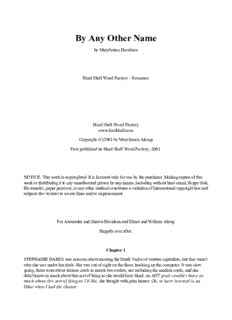
By Any Other Name
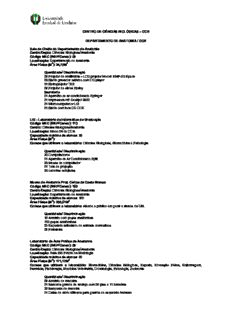
CENTRO DE CIÊNCIAS BIOLÓGICAS – CCB DEPARTAMENTO DE ANATOMIA / CCB Sala da
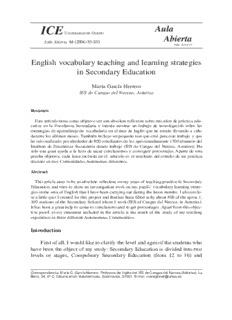
Aula Abierta - Dialnet

Color Atlas of Physiology

Technische Mechanik

Business Plan - Civil Air Terminal at Dover AFB

Allgemeine Psychologie I
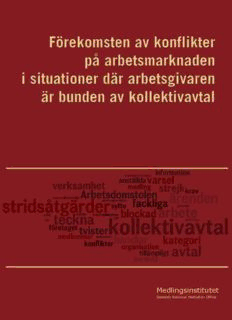
Ladda ner som PDF-dokument

The Trail of 98 by Robert W Service
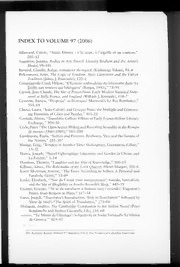
Romanic Review 2006: Vol 97 Index
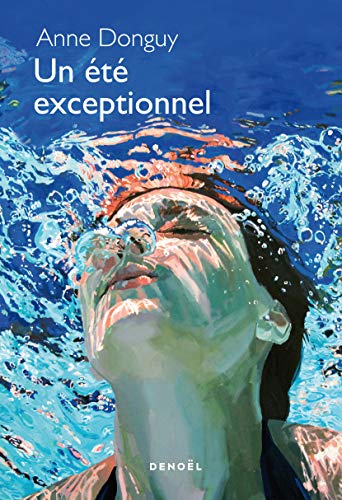
Un été exceptionnel
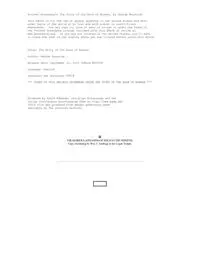
The Story of the Book of Mormon by George Reynolds

Sebastian
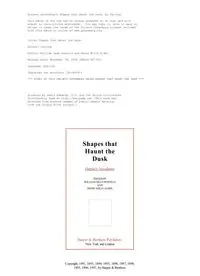
Shapes That Haunt the Dusk edited byWilliam Dean Howells Henry Mills Alden
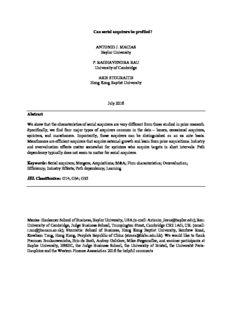
Can serial acquirers be profiled?
